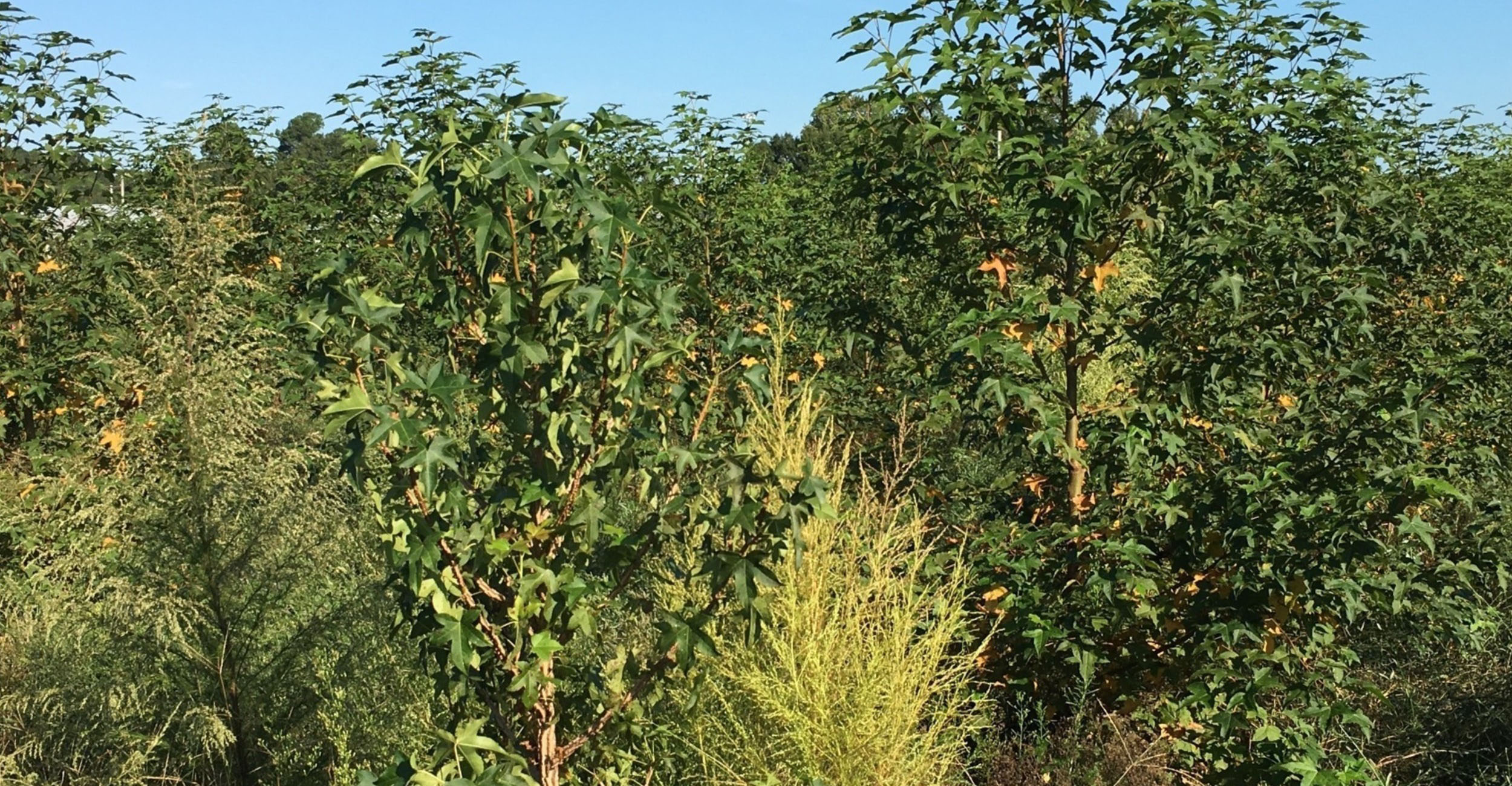
Sun grant supports biofuel research of sweetgum trees
Wednesday, June 30, 2021
Media Contact: Gail Ellis | Communications Specialist, Copywriter | 620-515-2498 | gail.ellis@okstate.edu
Oklahoma State University researchers are studying hybrid sweetgum trees as a potential feedstock for biobased industries in the south-central region of the U.S.
OSU faculty Omkar Joshi, Rodney Will, Bryan Murray and Lu Zhai in the Natural Resource Ecology and Management Department, along with Mike Blazier from Louisiana State University, have been awarded a Sun Grant to pursue research in the region. The grant supports three years of study on the growth, productivity, economics and social acceptance of hybrid sweetgum as a bioenergy fuel.
“If the bioindustry becomes established in the future, this research will position us to leverage that economy with the appropriate feedstocks,” Will said.
Sweetgum is an important species for pulp, paper, lumber and railroad crossties. Due to its desirable growth rate, form and density, sweetgum is an ideal hardwood with a per ton market value equivalent to or greater than pine in southeast Oklahoma.
“We want to assess sweetgum’s ability to grow wood and fiber quickly in Oklahoma,” Will said. “It’s an adaptable tree that can be planted on a wide range of soils and sites in the eastern part of the state.”
Most of the research will be conducted on sweetgum plantations owned and managed by forester Ed Hurliman in the Broken Bow area. When hardwood sawtimber and pulpwood prices increased a few years ago, Hurliman decided to experiment by planting additional varieties of hardwood trees. Although the majority of what he grows is loblolly pine, he also has 2,000 acres of native and hybrid sweetgum.
“We selected hybrid seedlings with the best genetics for our plantations,” Hurliman said. “The hybrid is a cross between Formosa sweetgum trees and American sweetgum. I’ll serve as a guide to our plantations in Oklahoma and Texas and share the access I have to other forests of sweetgum in Texas and Arkansas.”
As OSU researchers conduct field measurements at Hurliman’s plantations, out-of-state colleagues, including Blazier from LSU, will gather additional data at another sweetgum site. Blazier is a project leader at LSU’s AgCenter Hill Farm Research Station.
“Between the Oklahoma and Louisiana locations, we’ll be able to observe sweetgum’s growth and development in a hyper-controlled experiment and under operational conditions. That will help us pinpoint sweetgum’s variability on an operational scale and get a sense of its full growth potential,” Blazier said. “We’ll bridge the gap between optimum and typical growing environments.”
The research partnership between Hurliman and faculty from OSU and LSU also will involve contributions from graduate students during the next three years. The potential of hardwood feedstocks as a biofuel has been studied in the past, but increasing the productivity of hybrid sweetgum varieties through different growth techniques is a new venture.
“We’re relying on our resources and economics to advance the science,” Joshi said. “We’re exploring opportunities with sweetgum to determine how far it can thrive throughout the region.”
In addition to fulfilling the team’s research goals, Hurliman said the grant also will benefit progressive foresters like himself who are open to innovative and effective methods of improving operations.
“I love forestry and knowing what tweaks you can make to impact growth. OSU research translates into bottom-line profits for us,” he said.
